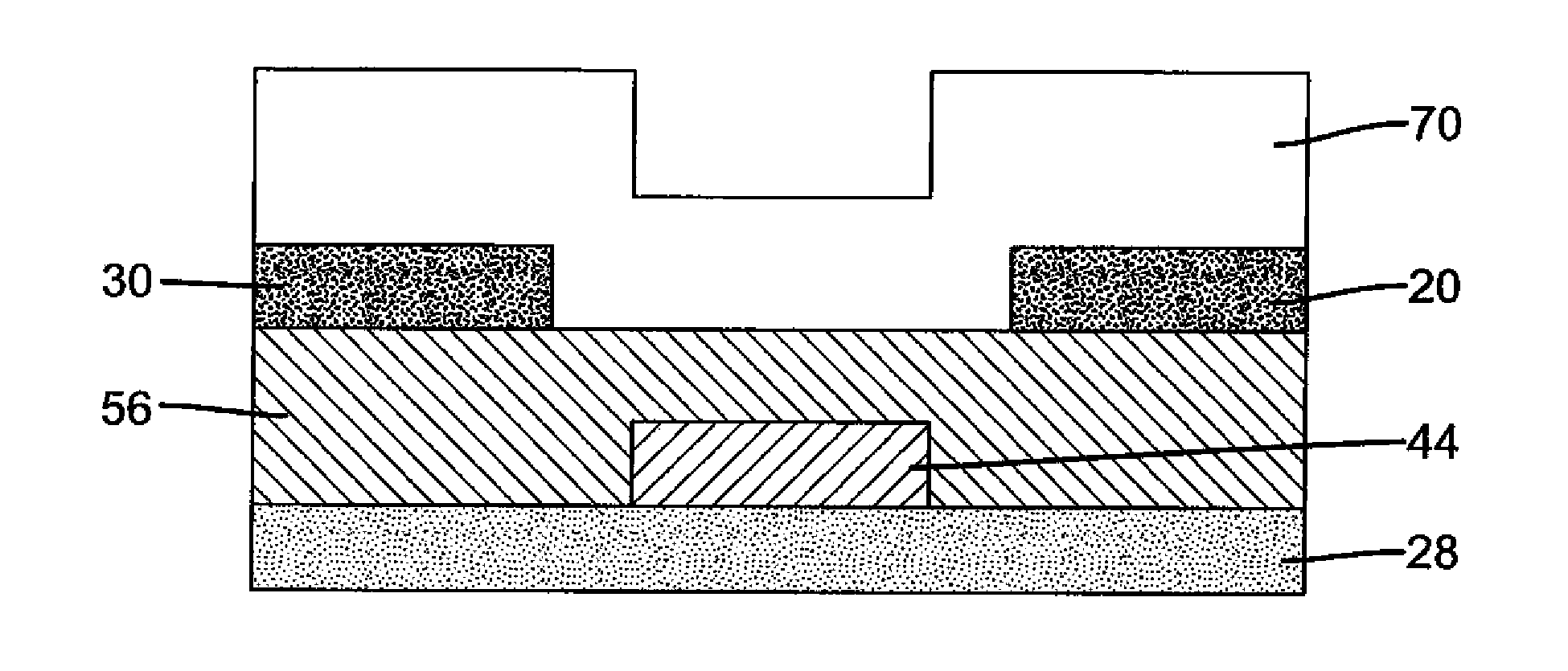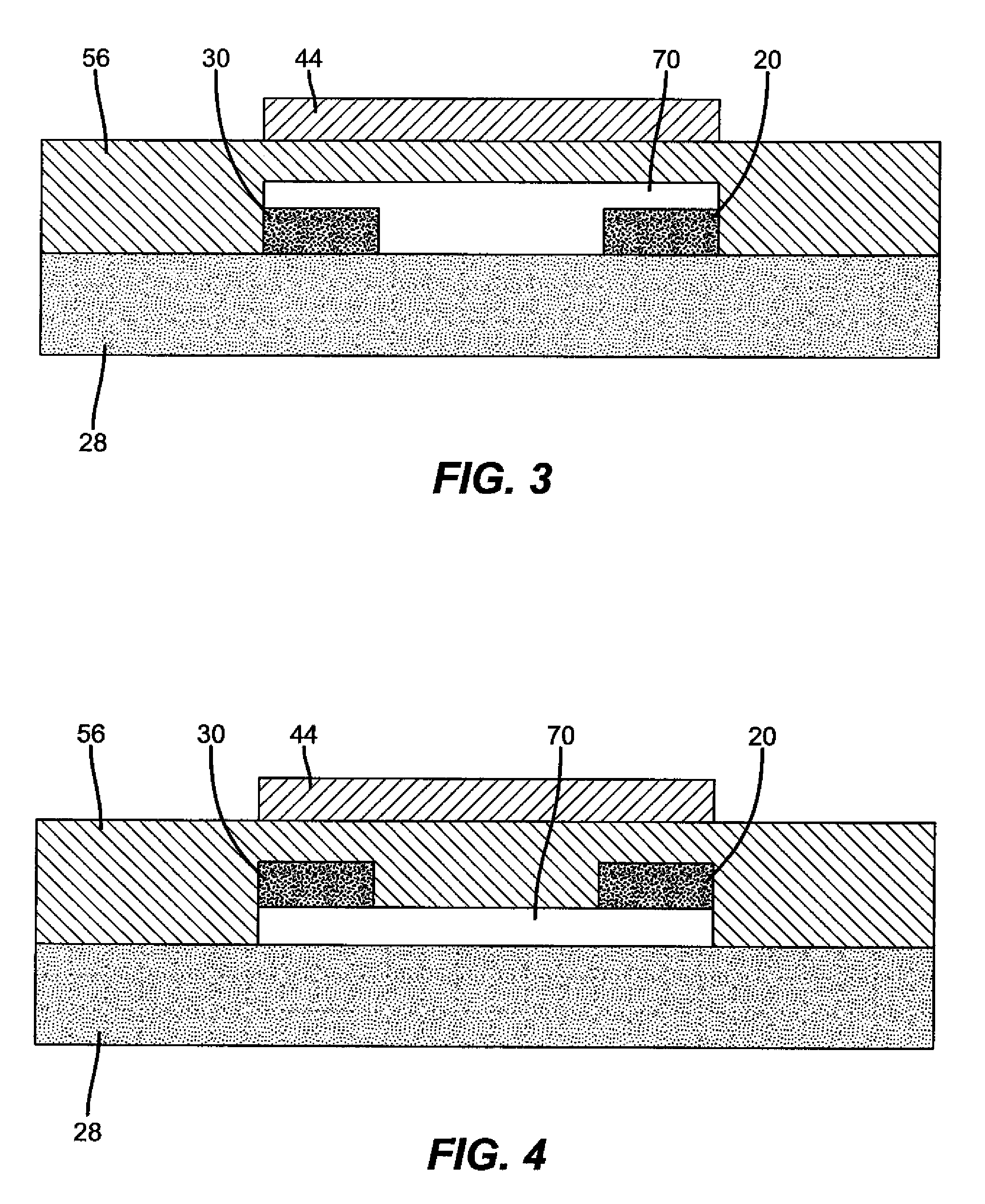Methods of making thin film transistors comprising zinc-oxide-based semiconductor materials and transistors made thereby
a technology of zinc oxide-based semiconductor materials and thin film transistors, which is applied in the direction of semiconductor devices, electrical devices, nanotechnology, etc., can solve the problems of wasting materials, amorphous silicon, and requiring relatively difficult or complicated processes,
- Summary
- Abstract
- Description
- Claims
- Application Information
AI Technical Summary
Benefits of technology
Problems solved by technology
Method used
Image
Examples
example 1
[0118]This example shows that working TFT devices can be created from a nanoparticle film at low temperatures. The semiconductor coating solution was prepared by diluting the above nanoparticle formulation, NLF-1, to 1.0% in ethanol. The above solution was applied to the substrate by spin coating at a rate of 1000 or 2000 rpm. After the spin coating, the Samples 1-1 through 1-4 were annealed for 10 minutes at a range of temperatures between 50° C. and 200° C. in dry air. Subsequent sample processing is as described above. Device testing yielded the following parameters:
[0119]
TABLE 1-1ExtractedMobilitySampleSpin SpeedTemperature(cm2 / Vs)1-11000 rpm 50 C.0.0014 cm2 / Vs1-21000 rpm100 C.0.0017 cm2 / Vs1-31000 rpm200 C. 0.095 cm2 / Vs1-42000 rpm200 C. 0.054 cm2 / Vs
[0120]As can be seen in Table 1-1, optional annealing at moderate temperatures can improve the performance of the semiconductor film. Effective transistor performance can be obtained over a wide range of temperatures, although higher ...
example 2
[0121]The semiconductor coating solution was prepared by diluting the above nanoparticle formulation, NLF-1, to the range of concentrations for Samples 2-1 through 2-7 as listed in table 2-1 in ethanol. The solution was applied to the substrate by spin coating at a rate of 2000 rpm. After the spin coating, the samples were annealed for 10 minutes at 200° C. in dry air. Subsequent sample processing is as described above. Device testing yielded the follow parameters:
[0122]
TABLE 2-1Extracted MobilitySample% ZnO Solids(cm2 / Vs)2-10.50.086 cm2 / Vs2-21.00.097 cm2 / Vs2-31.30.108 cm2 / Vs2-41.30.140 cm2 / Vs2-51.60.059 cm2 / Vs2-61.90.058 cm2 / Vs2-72.20.034 cm2 / Vs
[0123]As can be seen in Table 2-1, effective transistor performance is obtained over a wide range of concentrations. Variations in the level of nanoparticles, however, can have some effect on device performance. In this particular embodiment, a range of 0.5 to 1.5% solids was found preferable.
example 3
[0124]A series of tests (Examples 3, 4, and 5) showed that device performance is degraded by the presence of excess materials in the nanoparticle formulation. The formulation, as described above in the material synthesis removed a mixture of organic and inorganic impurities by washing. In this example,
[0125]a purely inorganic salt, potassium hydroxide, was added to the formulation to simulate the effect of ionic compounds on device performance. The coating solution was prepared with the above nanoparticle solution NLF-1 to obtain a final solution containing 1.1% ZnO seeds and potassium hydroxide at the concentrations in Samples 3-1 to 3-4 as listed in Table 3-1 below. The solution was applied to the substrate by spin coating at a rate of 2000 rpm. After the spin coating, the samples were annealed for 10 minutes at 200° C. in dry air.
[0126]Following the above nanoparticle layer deposition process, a second layer consisting of zinc acetate dissolved in methanol at a concentration of 0...
PUM
 Login to View More
Login to View More Abstract
Description
Claims
Application Information
 Login to View More
Login to View More - R&D
- Intellectual Property
- Life Sciences
- Materials
- Tech Scout
- Unparalleled Data Quality
- Higher Quality Content
- 60% Fewer Hallucinations
Browse by: Latest US Patents, China's latest patents, Technical Efficacy Thesaurus, Application Domain, Technology Topic, Popular Technical Reports.
© 2025 PatSnap. All rights reserved.Legal|Privacy policy|Modern Slavery Act Transparency Statement|Sitemap|About US| Contact US: help@patsnap.com



